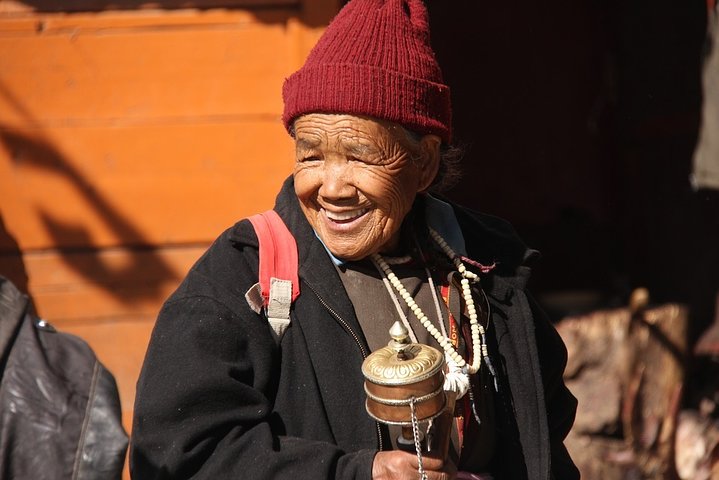High Passes, Quiet Monasteries: A 6-Day Ladakh Adventure from Delhi
Six days of high passes, river confluences, and monastery life—an accessible primer to Ladakh’s essential experiences.
You land in Leh and the mountains are immediate—an amphitheater of ochre ridges and snow-dusted crowns. The air has a different patience here; it thins and asks you to slow down. On your first morning you climb to Shanti Stupa and the town below unfurls like a hand-drawn map: flat-roofed houses, prayer flags, and the river that stitched the valley together long before roads did. Over six days, a private driver and guide move you between monasteries that sit like watchful elders and river confluences that seem to argue about which way the land should run. It’s not just a photo tour. It’s a tactile education in altitude, history, and the intentional quiet of a Himalayan community.
Trail Wisdom
Acclimatize first
Spend your first 24–48 hours taking it easy in Leh—short walks and lots of water significantly reduce AMS risk.
Layer for temperature swings
Days can be warm in sun but nights drop sharply—packing layers keeps you comfortable across microclimates.
Protect against sun and glare
High-altitude UV is intense—sunglasses, SPF 50+, and a hat are necessary even on cool days.
Carry cash and photocopies
Small villages often run on cash; also carry copies of permits and ID in case of checks.
Local Knowledge
Hidden Gems
- •Walk the quieter lanes behind Leh Bazaar at dawn for local life and rooftop views
- •Drive to lesser-visited gompas on valley shoulders for uninterrupted meditation chants
Wildlife
Himalayan marmot, Lammergeier (bearded vulture)
Conservation Note
Tourism is growing; travelers should minimize waste, avoid disturbing wildlife, and follow monastery etiquette (no loud talking or flash photography in prayer halls).
Ladakh’s position on ancient trade routes between India, Tibet, and Central Asia shaped its monasteries and multicultural influences.
Seasonal Guide
spring
Best for: Blossoming apricot trees, Fewer tourists
Challenges: Cold nights, Possible snow at higher passes
Late spring brings melting snow and blooming orchards; roads open but nights remain chilly—layers and flexible scheduling are key.
summer
Best for: Clear skies, Full road access
Challenges: Crowds in July–August, Strong UV
June–September is the main travel window with reliably open passes and warm afternoons, though monsoon currents can bring sporadic storms.
fall
Best for: Crisp light for photography, Fewer crowds
Challenges: Colder nights, Earlier seasonal closures
September offers stable weather, golden light, and a quieter feel—an ideal compromise between access and calm.
winter
Best for: Lone solitude, Snow-scapes
Challenges: Most passes closed, Severe cold and limited services
Winter transforms Ladakh into a high-elevation desert of snow and quiet—access is heavily restricted and travel is for experienced, well-equipped travelers only.
Photographer's Notes
What to Bring
Warm insulated jacketEssential
Cold nights and high-elevation winds make a reliable insulated layer essential.
UV sunglasses & sunscreenEssential
High-altitude sun and reflected glare off rocks and snow increase UV exposure.
Sturdy trekking shoesEssential
Uneven monastery courtyards and valley trails need good traction and ankle support.
Reusable water bottle with purifierEssential
Hydration is critical at altitude; purification avoids buying single-use plastic bottles.
Common Questions
Do I need to acclimatize before doing the tour?
Yes—plan two slow days in Leh to acclimatize (light activity, hydrate) before higher-elevation drives to Nubra or passes above 5,000 m.
Are permits required for Nubra Valley and other areas?
Some border and inner-line areas require local permits; a private tour operator typically arranges these for you.
How strenuous is the trip?
The trip is moderate—mostly road travel with short walks and light hikes; altitude is the main challenge rather than technical terrain.
What kind of food and accommodation can I expect?
Accommodation mixes hotels in Leh and family-run homestays in villages; meals feature Tibetan- and Ladakhi-influenced dishes like momos and thukpa, with basic but hearty options in rural spots.
Can children and older travelers do this itinerary?
Yes, with precautions—children and older adults should acclimatize carefully and avoid sudden exertion; consult a physician if you have cardiovascular concerns.
How reliable is cell service and internet?
Cell service is generally reliable in Leh but patchy in remote valleys; many homestays have intermittent Wi‑Fi—plan for limited connectivity.
What to Pack
Reusable water bottle with purifier (hydrate at altitude), Insulated jacket (cold nights), Sunglasses + SPF (high UV), Sturdy trekking shoes (uneven terrain)
Did You Know
The name 'Ladakh' comes from Tibetan and is often interpreted as 'land of high passes,' reflecting the region’s mountain-crossing routes.
Quick Travel Tips
Fly to Leh to save time and reduce road fatigue; acclimatize for 24–48 hours on arrival; carry local currency for remote areas; book permits and private transport in advance
Local Flavor
After a day of gompa visits and valley drives, head back to Leh Bazaar for steaming momos, salty butter tea, and rooftop cafes that serve simple Dal-lentil stews; homestays offer the best apricot-based desserts and conversation with hosts.
Logistics Snapshot
Closest airport: Leh (IXL); Driving: Leh–Nubra ≈ 150 km (4–6 hours depending on stops); Cell service: reliable in Leh, limited in valleys; Permits: Inner Line/permits for certain border areas—operator usually arranges.
Sustainability Note
Ladakh’s fragile high-altitude ecosystems recover slowly—pack out waste, avoid single-use plastics, stick to marked routes, and respect monastery protocols.

